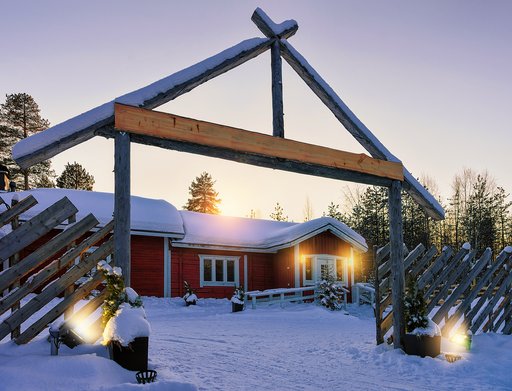Interpretations of the Nordic Model since the 1930s
The different faces of the region and its constituent parts are reflected in the changing meaning of the ‘Nordic model’ over time
Summary: The meanings of the Nordic model have varied over time and in different contexts. The term was used to refer to the policies of the social democratic parties which dominated Scandinavia during the post-war era. From the late twentieth century it has been used as a marketing tool for branding the region as well as an academic term for economists and social scientists. The ‘Nordic model’ often refers to the comprehensive welfare state financed by high levels of taxation. But while the Nordic countries do share common political and economic features, there are also key differences, meaning it may be more accurate to talk about Nordic models in the plural.
The Nordic countries are often described as constituting a special ‘Nordic model’, defined as a distinctive set of social and economic policies. During the 2010s, these policies were often praised as an example for others to follow. On the centre-right, there was interest in the apparent flexibility and competitiveness of the Nordic economies, while commentators on the political left admired the generous welfare states. To be sure, there were also critical voices, expressing concerns about the difficulties Nordic societies had in dealing with immigration, or their apparent hypocrisy in environmental matters. But the portrayal of the Nordic region – and the countries which are a part of it – was largely positive. Moreover, this favourable coverage seemed to be supported by the strong position of the Nordic countries in global indexes of gender equality, happiness, political openness or lack of corruption.

Scholars have studied the changing meanings of the Nordic model and the ways in which it has been defined, redefined and used in different contexts, historically and geographically. At the same time, politicians and organisations within the region have also presented their own interpretations of what makes the Nordic region distinctive in line with their respective aims, with a notable example being the Nordic Council of Ministers’ branding strategy launched in 2013. As a result, the meanings of the Nordic model have become increasingly difficult to pin down. And these meanings have never been static, but have changed considerably over the fifty years or so since the concept first appeared.
Interest in the Nordic region from the 1930s
Most scholars would agree that the first significant wave of political interest in the modern Nordic region dated from the 1930s, when Sweden was famously cited as a successful example of a ‘middle way’ between capitalism and communism in American debates about the ‘New Deal’. From the 1950s, however, foreign interest in the Nordic countries became increasingly directed towards the policies of the social democratic parties, which dominated governments in Denmark, Norway and especially Sweden during the post-war decades. For some of its admirers on the political centre-left, the Nordic countries seemed to offer an example of how to achieve both growth and welfare, in a mixed economy that mitigated the worst effects of capitalism through its redistributive social policies. This was rejected by the far left as a capitulation to the capitalist system, while on the political right, it was interpreted rather as a dystopian warning of the dangers of high taxation and the strong state.
The first references to the Nordic – or Scandinavian – model from the 1970s
The first references to the term Nordic model – at that time mostly referred to as ‘Scandinavian’ rather than Nordic – date from the 1970s, when it was used in a highly technical sense by economists studying inflation in the different Nordic countries during the 1970s. From the 1980s it gained a broader meaning in comparative studies of politics and social policy, while at the same time it became an important marker of identity for the Nordic social democratic movement, as the social democrats sought to respond to new political challenges. In social science research, the Nordic model was used as an analytical concept to help make comparisons within the region (what were the similarities and differences between the welfare systems in Sweden and Denmark for example?) or between the Nordic region as a whole and other parts of Europe and North America (what was distinctive about the Nordic welfare state compared to those in Germany or Britain?) The ‘Nordic model’ most often referred to comprehensive welfare states financed by high levels of taxation. But it could also be used to describe other common characteristics of Nordic political economy: the apparently high levels of political consensus for example, or the arrangements for collective bargaining in the labour market.
Wider world events influence the interest and importance of the Nordic Model

The emergence and popularity of the Nordic model should be seen against the background of the Cold War and the ideological divisions between West and East. Recent research – for example in our forthcoming volume – has highlighted how the Nordic model concept was shaped not only by this axis, but also by the North-South divide. From the 1960s, the Nordic countries were active in global debates about development, and by the 1970s Denmark, Norway and Sweden had established reputations as relatively generous donors of overseas development aid to what was then known as the ‘Third World’. According to some, the Nordic countries’ own historical experiences of economic and political modernisation since the late nineteenth century seemed to offer a favourable example for other countries, perhaps even a ‘model’. The reality proved to be much more complicated, of course, and Nordic aid programmes were vulnerable to the same critiques – well-intended naivety at best; neo-colonialism at worst – as those associated with larger countries.
A turning point in the evolution of the Nordic model, as in so much else, came in the early 1990s. The end of the Cold War undermined the notion of the region as being ‘in between’ the East and the West, and the fall of Soviet Communism and the rising hegemony of neo-liberalism challenged traditional social democratic politics. The sense of change was exacerbated by a severe economic recession in Sweden and Finland and the emergence of a new dynamic phase in European integration.
While this seemed to trigger a relative loss of confidence in the idea of the Nordic model it also drove a renewal of the concept, against the background of rapid transformations in the Nordic societies since the 2000s, as they reacted to rising globalization. References to Nordic ‘flexicurity’ featured strongly in public debates about the future of the French social model in 2006-8, to take just one example. As the global financial crisis unfolded in 2008-9, attention turned to the Nordic countries (excepting Iceland, which experienced a massive financial crash in 2008) as examples of sound public finances. In a special report published in 2013, The Economist magazine cited the Nordic region as ‘the next supermodel’. This attention coincided with a wave of international commercial interest in different aspects of contemporary Nordic culture, ranging from ‘Nordic noir’ in fiction and television drama, to ‘New Nordic Cuisine’ and more nebulous concepts such as happiness and ‘hygge’.
The Nordic model and the reputation of the Nordic countries

As this suggests, the concept of the Nordic model was expanded to include different features of Nordic culture and public life, as it became an instrument of Nordic product marketing and Nordic branding. It is not easy to sum up the meanings of the Nordic model as it has now become. Perhaps the most important point is that it is now necessary to speak about Nordic models rather than a single Nordic model, reflecting the many different ways in which the term is used. The term also appears alongside references to national models – Danish, Finnish, Norwegian etc. – though it is perhaps notable that Sweden no longer seems to hold the undisputed leading position that it once did as the epitome of the Nordic model. While there are continuities in how the Nordic model is popularly understood, underscoring the similarities between the Nordic countries in terms of their socio-political systems, policies and values, the reality is more fragmented.
This article is published in response to readers' interest in the Nordic model.
Further reading:
- Andreas Mørkved Hellenes, Mary Hilson, Carl Marklund and Byron Rom-Jensen, eds. Globalising the Nordic Model: From exceptionalism to entanglement (Manchester: Manchester University Press, forthcoming 2026).
- Byron Rom-Jensen, Andreas Mørkved Hellenes, Mary Hilson and Carl Marklund. 'Modelizing the Nordics: Transdiscursive Migrations of Nordic Models, c. 1965-2020.' Scandinavian Journal of History, 48, 2 (2022), pp. 249–271.
- Haldor Byrkjeflot, Lars Mjøset, Mads Mordhorst and Klaus Petersen, eds., The Making and Circulation of Nordic Models, Ideas and Images (London: Routledge, 2021).
